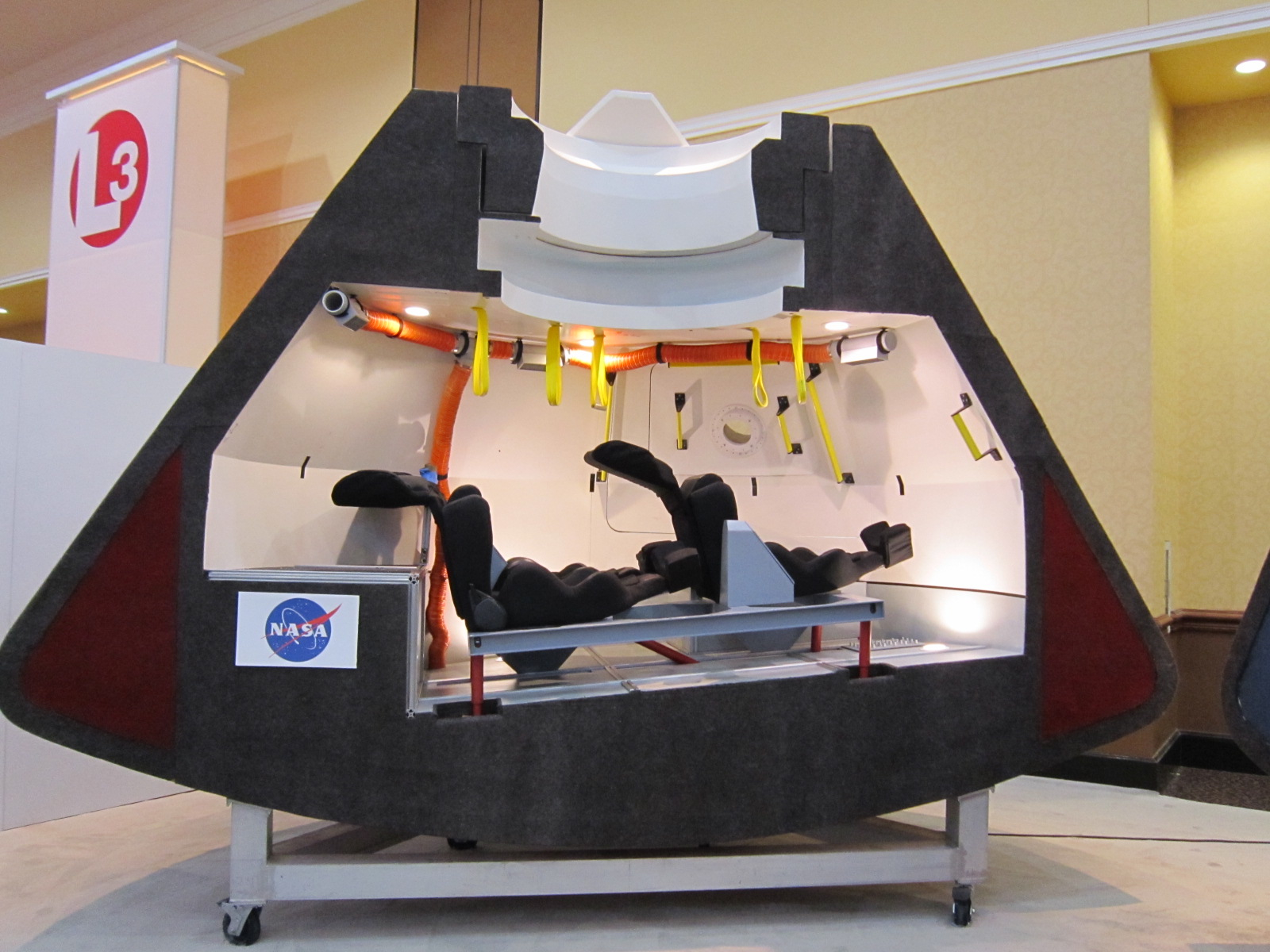Boeing's New Astronaut Taxi on Display at Space Conference

COLORADO SPRINGS, Colo. — A full-size model of a new space capsule being built by Boeing to carry astronauts to the International Space Station offers a glimpse of how spaceflyers will be positioned inside the spacecraft.
The two cross-sections of Boeing's CST-100 capsule are being displayed here at the 28th National Space Symposium, which is being held from April 16 to 19 at The Broadmoor Hotel.
Boeing is building the CST-100 capsule as part of a NASA program that aims to foster the development of a new fleet of American spacecraft to carry astronauts to the space station. With the space shuttle program now retired, NASA is hoping commercial vehicles can soon begin ferrying cargo and then astronauts to and from the orbiting outpost.
The gumdrop-shaped capsule measures 14.5 feet (4.5 meters) across at its widest point, and will travel into orbit atop an Atlas 5 rocket. The spacecraft will be able to carry up to seven astronauts, with each capsule designed to fly to space and back 10 times, Boeing officials have said.
The company is aiming to fly its first manned CST-100 mission in 2015 or 2016.
This story was provided by SPACE.com, a sister site to LiveScience. You can follow SPACE.com staff writer Denise Chow on Twitter @denisechow. Follow SPACE.com for the latest in space science and exploration news on Twitter @Spacedotcom and on Facebook.
Sign up for the Live Science daily newsletter now
Get the world’s most fascinating discoveries delivered straight to your inbox.

Denise Chow was the assistant managing editor at Live Science before moving to NBC News as a science reporter, where she focuses on general science and climate change. Before joining the Live Science team in 2013, she spent two years as a staff writer for Space.com, writing about rocket launches and covering NASA's final three space shuttle missions. A Canadian transplant, Denise has a bachelor's degree from the University of Toronto, and a master's degree in journalism from New York University.











